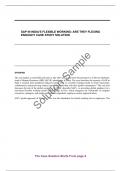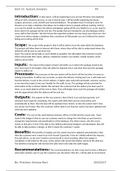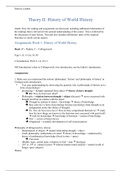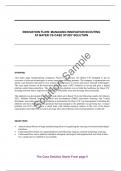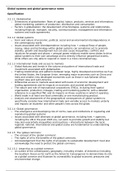Case
Case Solution for SAP in India's Flexible Working Are They Flexing Enough?
- Course
- Institution
Get the SAP in India's Flexible Working Are They Flexing Enough? Case Study Solution and Analysis by Sonal Kumar, Shrusti Mohanty, Sanjay Patro, Gloryson Chalil | Case ID: W34921. We guarantee that this case solution is 100% original, official, and not AI-generated. It is a plagiarism-free, complet...
[Show more]
